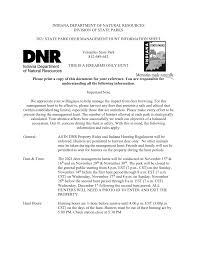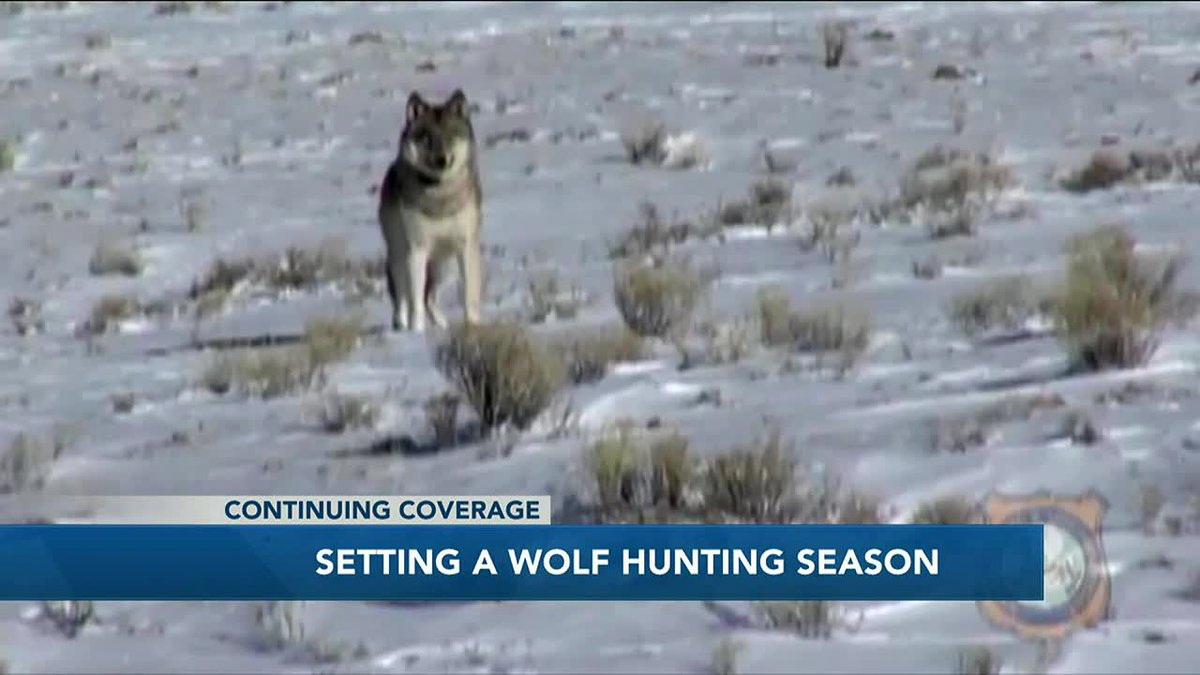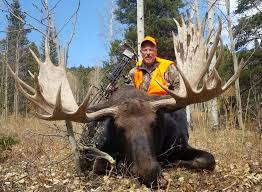
A mentored hunting license is a type of firearm permit that enables someone to hunt for a fee with the guidance of a more experienced hunting companion. Mentored hunters must have a Wisconsin hunting permit and a Wisconsin handgun license. They must not be more than an arm's reach of their protégé. A mentored hunter must also follow all Wisconsin hunting laws. A youth under the age of 18 cannot possess a handgun for hunting.
Mentor hunters must accompany mentees during hunting trips. A mentor must not only be an example but also know the law governing hunting. They must also have the hunter education certificate and a mentored hunting license. They must also have parental permission or be at least 16-years-old. The mentor must hold a license for big-game hunting in order to hunt with the mentored youth. The mentee must be 18 years of age to hunt with a mentor.

The commission has a mentoring program for hunters that aims at attracting new hunters. A mentoring program allows an experienced hunter or guide to join a novice hunter. Both the mentors and mentees can hunt within arm’s reach, so that the mentor can answer any questions and provide guidance. The goal is to increase hunting in the state by encouraging more hunters.
The mentored license for hunting is a unique type. An adult must supervise an Apprentice Hunter with a New Jersey hunting permit. A parent or guardian must give permission for the Mentor. The mentor may not supervise more than one Apprentice Hunter at a time. Mentors must keep in touch with Apprentice and Mentor. When a mentoring program is in place, the young hunter is not required to have a HuntSAFE certification.
A valid Idaho hunting certificate is required in order to obtain a mentored license. Mentored hunters must be at minimum 16 years of age. Hunting license holders must accompany their hunters on spring turkey firearms day. Not only does a mentored hunter permit not give the hunter special rights, but it also means that the hunter must be willing to take part in the process.

The mentored hunting license allows a fully-licensed adult to accompany a young person who is new to hunting. Important to remember that the mentor must not be younger than 18 years. South Dakota residents must also be allowed to mentor a hunter. The mentored hunter must be at least 18 and have a HuntSAFE certificate. The Mentored Hunting License will be signed by a fully-licensed adult.
FAQ
How much does it cost for you to hunt?
Hunting trips can be expensive depending on where you live, what type of wildlife is being targeted, and how big the animal that you are hunting.
In general, a two-person hunting party will cost between $500-$1,000 per head. This includes accommodation, food as well as equipment, licenses and gas.
Certain areas may have higher prices than other. Expect to pay more if hunting during peak seasons like the fall turkey season.
What do I need to know about hunting?
Hunting success requires that you understand the movements and habits of your animal as well as how to avoid injury.
It is vital to learn the laws governing hunting in your particular state. Some states allow certain types of hunting while others prohibit it completely.
Other factors include the terrain and weather conditions as well.
You should decide if you would like to hunt with friends or alone when you make the decision to pursue this hobby.
Hunting is an enjoyable activity for many people. This is because it helps you focus on your goal. You might miss your chance if you're all alone.
Hunting is a process that requires extensive preparation. Plan your hunt to find the best place.
You will also need to prepare your weapons. You should also clean and test your weapons before you leave home.
Proper clothing is essential when hunting. Dress appropriately for the weather conditions and terrain.
Be sure to have plenty of water and food. Also, be sure to have additional ammunition and supplies in case of emergency.
You shouldn't leave anything behind. It could be lost or damaged.
It is best to choose a safe place that doesn't have predators so you can start hunting.
Be sure to follow the government's rules. These regulations protect wildlife as well as humans.
What guns can you legally use?
There are many types of hunting weapons that you can use.
Hunters usually use rifles or shotguns or handguns as well muzzle-loading firearms.
Rifles can be used to fire long-range bullets. Shotguns are usually loaded with pellets. Handguns are made to fire bullets through your hand. Muzzle-loading firearms look similar to modern pistols.
Crossbows are used to shoot arrows. Bowhunters are archery weapons.
It takes special training to hunt with a bow crossbow. First, learn how you can aim and shoot the weapon.
What type of training does it take to become an experienced hunter? How long is it?
Basic courses are required in order to learn how you can hunt. This course covers the basics of hunting, as well as information on the laws.
You will learn how firearms and ammunition should be handled. These items will be safely used.
This course may last from two to three months. Some courses can only be taken online. Others are held in person.
To qualify for a license, you must pass a written test. You may also need evidence that you have taken a hunter-education course.
What does it cost to be licensed? What if I don’t make enough money?
The cost of getting licensed varies depending on the state you live in. The cost of licensing can range from $20 to more than $100.
You may be eligible for a loan, grant or other financial assistance if you don't have enough cash.
In addition to the fee, you will need to purchase a tag. Prices vary depending on which type of game is being hunted.
You can get tags for deer and elk, bear, bison, moose, waterfowls, upland birds, and furbearers such as foxes.
Some states require registration with the Department of Natural Resources to be eligible for a license.
Check the regulations in your area before you hunt.
What gun is best to hunt?
A.22 caliber firearm is the best weapon to hunt with. It is light and easy to transport. It also allows you to shoot accurately at long distances.
When you don't expect a predator to attack, this is the best time to use your firearm.
You don't want your ammunition to go to waste by hitting a tree. You need to have a clear shot at your prey.
A rifle with a.30 calibre can be used for hunting larger game such deer and elk. It's heavier than the.22 caliber rifle.
You will need to practice more to achieve the same level of accuracy with a 30-caliber rifle.
Statistics
- Less than 1% of Hawaii's population has a hunting license. (stacker.com)
- - Percent of residents with paid hunting licenses: 0.7%- (stacker.com)
- - Percent of residents with paid hunting licenses: 0.7%- (stacker.com)
- Over the past 50 years, the number of hunting licenses in California has been on a rapid decline, falling 70% from more than 760,000 in the 1970s to under 268,000 in 2020—even as the state's population has skyrocketed, according to The Mercury News. (stacker.com)
External Links
How To
How to pick the best hunting spots in the forest
When hunting in good areas, the first thing to do is identify what type of game you want to hunt. There are many types of wildlife and birds that live within forests. If you don't know what kind of animal you want to hunt, there won't be any places where they can be caught.
The forest is home to two types of animals: small mammals and large mammals. The large mammals include deer, elk, moose, caribou, bear, wolf, and wild boar. Small animals include rabbits. Each species has its own habitat so it is important to choose the right spot before you venture out into the woods. To find out if there are endangered species in your area, you can search the online flora-fauna list. If you're planning to hunt a certain species, make sure that the area you plan to go to is safe from poaching.
You will need to be able to set up your equipment properly if you are going to hunt a specific species. Because it can affect your success rate, it is important to have the right equipment. A gun that shoots accurately at close range will work well for hunting a rabbit. However, a rifle with long range capabilities is required for hunting larger animals, such as deer. A bait is also necessary to attract the prey. Some prefer to place meat inside a trap, while others prefer peanut butter or corn. No matter what method you use, you must adhere to the laws and regulations in the country you are hunting.
You need to consider many factors when choosing a hunting location, including weather conditions, terrain, vegetation and wildlife population. Safety is the main consideration when hunting. Make sure that you select a place that is free from predators and dangerous animals. In addition, try to avoid areas where there are too many people, especially during hunting season. It is important to note the seasons when hunting, as this will help you decide the best time to hunt.
You should consider the weather when choosing a hunting location. This is vital as it affects the number and species of animals that are likely to be present. During winter, the temperature drops below zero degrees Celsius, and snow covers the ground. The thick snow layer makes it difficult for coyotes, bears, wolves, deer and other animals to be seen. These animals might still be visible if there is a clear day. On the other side, summer is when temperatures exceed 30 degrees Celsius and the sun warmths the earth. The heat causes animals to flee from the heat in order to find shelter.
Be aware of the terrain. You can easily walk and run across the area on a flat surface. But uneven surfaces require more effort. Steep slopes require more effort and can sometimes lead to muddy trails. Try to find a place that doesn't have any obstacles, so you can easily travel through the area.
The vegetation should be considered as well. The environment can affect the size and density of plants. For smaller animals, large trees can provide shade and cover while shrubs or bushes can offer shelter. If you want to find large animals, you should look for dense vegetation.
Last but not least, be mindful of how many animals you are allowing into your home. Statisticians estimate that North America has more than 100 million deer. They eat half of what crops produce and play an essential part in maintaining biodiversity. But if they grow too large, they can become pests and cause damage to the ecosystem. Therefore, it's important to keep the population balanced.